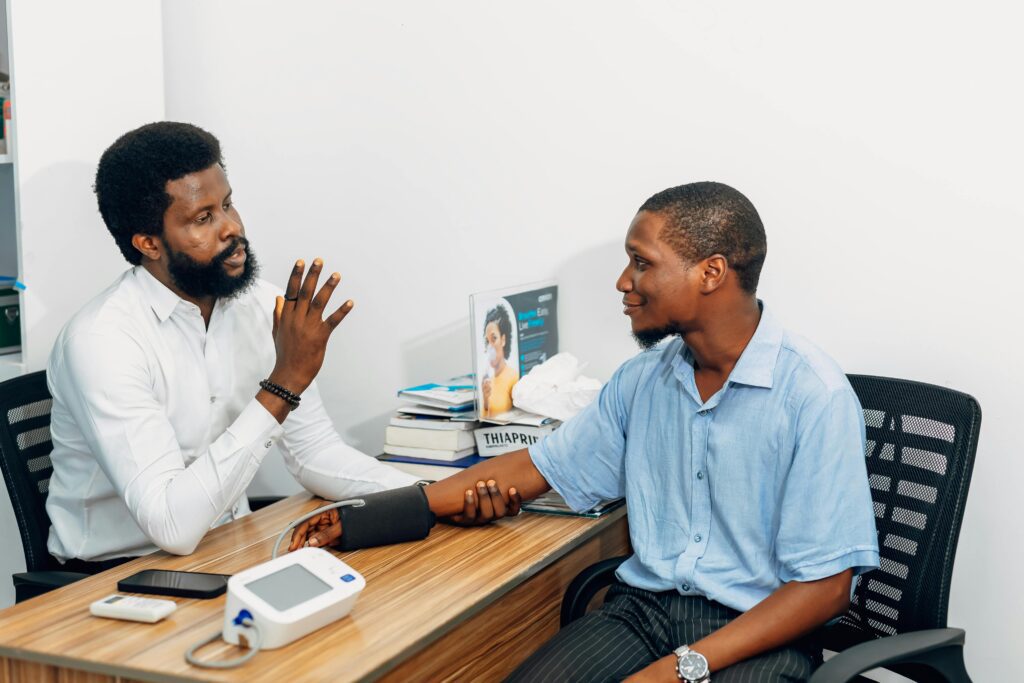World Hypertension Day 2025 | Theme: “Measure Your Blood Pressure Accurately, Control It, Live Longer”

High blood pressure (hypertension) remains one of the leading risk factors for cardiovascular disease and premature death worldwide. Yet in many low- and middle-income countries (LMICs), hypertension continues to go undetected, unmanaged, and untreated — contributing to avoidable complications like heart failure, stroke, and kidney disease.
Despite being largely preventable, an estimated 1.28 billion adults globally are living with hypertension, with two-thirds residing in LMICs. Scaling accurate BP screening could prevent millions of premature deaths, reduce health system strain, and empower communities to take charge of their health.
This World Hypertension Day, the global health community is reinforcing a simple yet life-saving message: Accurate blood pressure monitoring saves lives.
Why Accurate BP Monitoring Matters for LMIC Health Systems
Hypertension is a silent, escalating epidemic — often asymptomatic and overlooked. In LMICs, where health systems are under-resourced, routine blood pressure screening is still not a given. This is especially urgent when only 21% of people with hypertension have their blood pressure under control.
Yet, many Ministries of Health and their partners face structural barriers:
- A lack of trained personnel at primary care level
- Stockouts or poor-quality BP monitoring devices
- Fragmented procurement systems
- Limited community outreach for chronic disease care
Early detection and consistent monitoring are critical to bend the curve of non-communicable diseases (NCDs), reduce emergency care costs, and improve population health outcomes.
Accurate BP Monitoring: The Foundation of Hypertension Control
Globally, nearly 46% of people with hypertension don’t know they have it. This gap is even wider in many LMICs — a missed opportunity for prevention that is both tragic and solvable.
That’s why accurate, routine monitoring — including self-measured blood pressure monitoring (SMBP) — is gaining global support as a cornerstone of hypertension control. Endorsed by the WHO, American Heart Association, and others, SMBP has proven to improve diagnosis, treatment adherence, and long-term outcomes. It’s especially relevant in LMICs, where access to health facilities may be limited and task-shifting to community health workers is essential.
Today’s innovations — from digital and portable upper-arm monitors to mobile-enabled diagnostic tools — are making this possible, even in hard-to-reach settings. These tools are:
- Easy to use in homes, clinics, and community outreach
- Able to support task-shifting to community health workers
- Vital for remote care, digital adherence support, and longitudinal NCD tracking
Basic mHealth solutions further support this model by enabling health data capture, medication reminders, and remote follow-up, empowering both patients and frontline health workers.
Evidence-based protocols recommend measuring blood pressure twice daily for at least seven consecutive days to get a reliable average. This requires access to quality devices, patient education, and consistent supply — all of which can be supported through system-level planning and procurement.
Enabling Scale-Up: Tools for Ministries of Health and Partners
A number of global and regional initiatives are helping LMICs strengthen their hypertension response through better diagnostics, training, and procurement:
- WHO’s HEARTS technical package provides evidence-based strategies, simplified protocols, and a toolkit for BP control in primary care.
- PAHO and regional NCD programs offer adapted clinical guidelines and operational support.
- mHealth applications and platforms like DHIS2 facilitate treatment adherence, remote follow-up, and national data reporting.
- Procurement solutions — including NCDconnect — make it easier for governments and NGOs to access the right products at the right time, aligned with international standards.
By integrating these tools, LMIC health systems can move from fragmented efforts to a more coordinated and scalable hypertension response — one that connects guidelines, training, affordable access to quality devices, and supply chains.
NCDconnect: Enabling Practical Access to Quality BP Devices
As Ministries of Health and their partners seek to operationalise these tools, access to affordable, quality-assured BP monitoring devices remains a bottleneck. This is where NCDconnect adds tangible value.
Built for LMICs, NCDconnect is a digital procurement platform and ecosystem solution that offers access to tools that support task-shifting and wide outreach, such as:
- Upper-arm digital BP monitors for use in primary care, home-based care, and outreach settings
- Quality blood pressure monitors, pulse oximeters, and other essential diagnostic tools. Devices selected to align with WHO’s HEARTS specifications
By reducing procurement fragmentation, ensuring quality assurance, and offering reliable supply options leveraging IDA Foundation’s 50 years of experience, NCDconnect supports health actors to scale their national hypertension efforts — from the clinic to the community level.
4 Actions Your Organisation Can Take Today
- Prioritise BP Monitoring Devices in national essential diagnostics lists and NCD procurement plans.
- Equip Community Health Workers with portable, user-friendly BP monitors for routine outreach.
- Adopt Digital Solutions to support remote monitoring, patient follow-up, and health data tracking.
- Strengthen Procurement Systems by working with partners like NCDconnect to consolidate orders and reduce costs.
Together, we can close the hypertension detection gap — one monitor, one patient, one system at a time.
If your organisation is working to improve hypertension screening and control in LMICs, we’re here to help. NCDconnect supports your next procurement cycle, helps ensure continuity of supply, and enables you to implement national NCD strategies more effectively.
Get in touch to learn more about our catalogue of BP monitors, ordering process, and how we can partner to strengthen your hypertension response.

